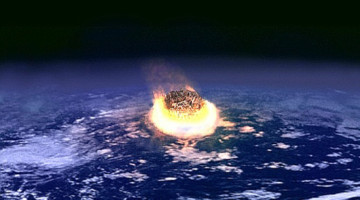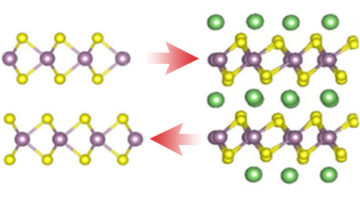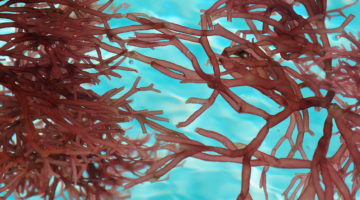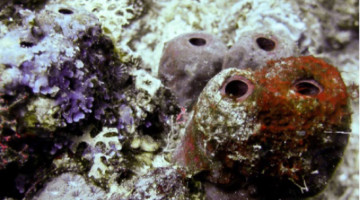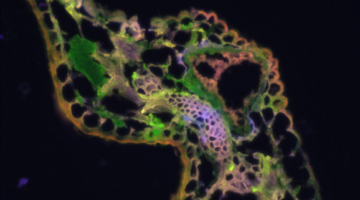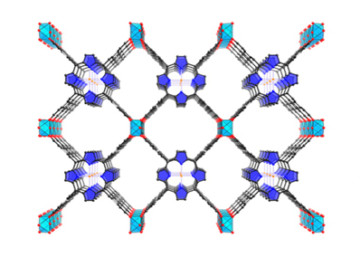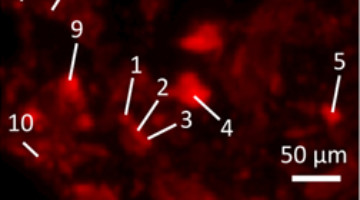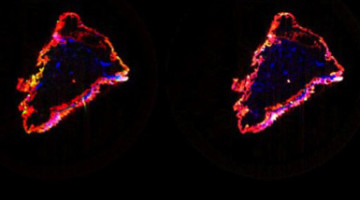Berkeley Lab has a well-storied expertise in exploring samples of extraterrestrial origin. This research—which has helped us to understand the makeup and origins of objects within and beyond our solar system—stems from long-standing core capabilities in structural and chemical analyses and measurement at the microscale and nanoscale. Read more »
Clarifying the Working Principle of a High-Capacity Battery Electrode
Operando x-ray absorption spectroscopy experiments revealed the electrochemical reaction mechanism of molybdenum disulfide (MoS2) electrodes in lithium-ion battery cells. The work unambiguously clarifies that the MoS2 conversion reaction is not reversible and that the Li2S formed is converted to sulfur in the first charge process. Read more »
A Seaweed Derivative Could Be Just What Lithium-Sulfur Batteries Need
Lithium-sulfur batteries have great potential as a low-cost, high-energy, energy source for both vehicle and grid applications. However, they suffer from significant capacity fading. Now, scientists have found that carrageenan, a seaweed derivative, acts as a stabilizer, allowing for more cycling and an extended lifetime. Read more »
Bacterial Symbiont Sequesters Arsenic and Barium in Sponges
Researchers used x-ray fluorescence, spectroscopy, and diffraction to study how populations of symbiotic bacteria can act as a detox organ in a host with no organs. The bacteria, members of the species Entotheonella, accumulate and mineralize large quantities of arsenic and barium in sponges. Read more »
Manganese Reduction-Oxidation Drives Plant Debris Decomposition
ALS research has shown that manganese reduction-oxidation (redox) reactions are an important factor in controlling the rate of plant debris decomposition. Understanding the role of manganese will help build better models to predict how litter decomposition rates—and thus nutrient cycling and the ecosystem carbon balance—may behave in future climate scenarios. Read more »![]()
![]()
Porous-Framework Electrocatalysts Are Key to Carbon Dioxide Conversion
Researchers have made significant headway in the quest to convert CO2 into valuable chemical products such as fuels, pharmaceuticals, and plastics. Recent work at the ALS has shown MOFs and COFs as a valuable new class of CO2 reduction catalysts. Read more »![]()
![]()
An Evolutionary Arms Race for Sulfur
Recent work at the ALS shows that the viruses infecting sulfur-oxidizing bacteria in the deep sea carry bacterial genes for the oxidation of elemental sulfur. Although the viruses themselves cannot use the sulfur, they likely supplement bacterial sulfur oxidation and then exploit the generated energy for viral replication. Read more »
Infrared Mapping Helps Optimize Catalytic Reactions
A pathway to more effective and efficient synthesis of pharmaceuticals and other flow-reactor chemical products has been opened by a study in which, for the first time, the catalytic reactivity inside a microreactor was mapped in high resolution from start to finish. Read more »![]()
![]()
Iron is the Key to Preserving Dinosaur Soft Tissue
Researchers studying organic material from dinosaur bones have been able to show that the samples contained original soft tissue material from Mesozoic dinosaurs. The x-ray techniques at the ALS were key to showing a possible mechanism for this unexpected preservation.
Read more »![]()
![]()
Moving Industry Forward: Finding the Environmental Opportunity in Biochar
Using ALS tomography capabilities, the EPA is currently investigating how biochar, a promising biofuel byproduct, sorbs environmental toxins and which kinds of biochar are the most effective. The possibilities for widespread use have already launched entrepreneurial commercial ventures.
Read more »![]()
